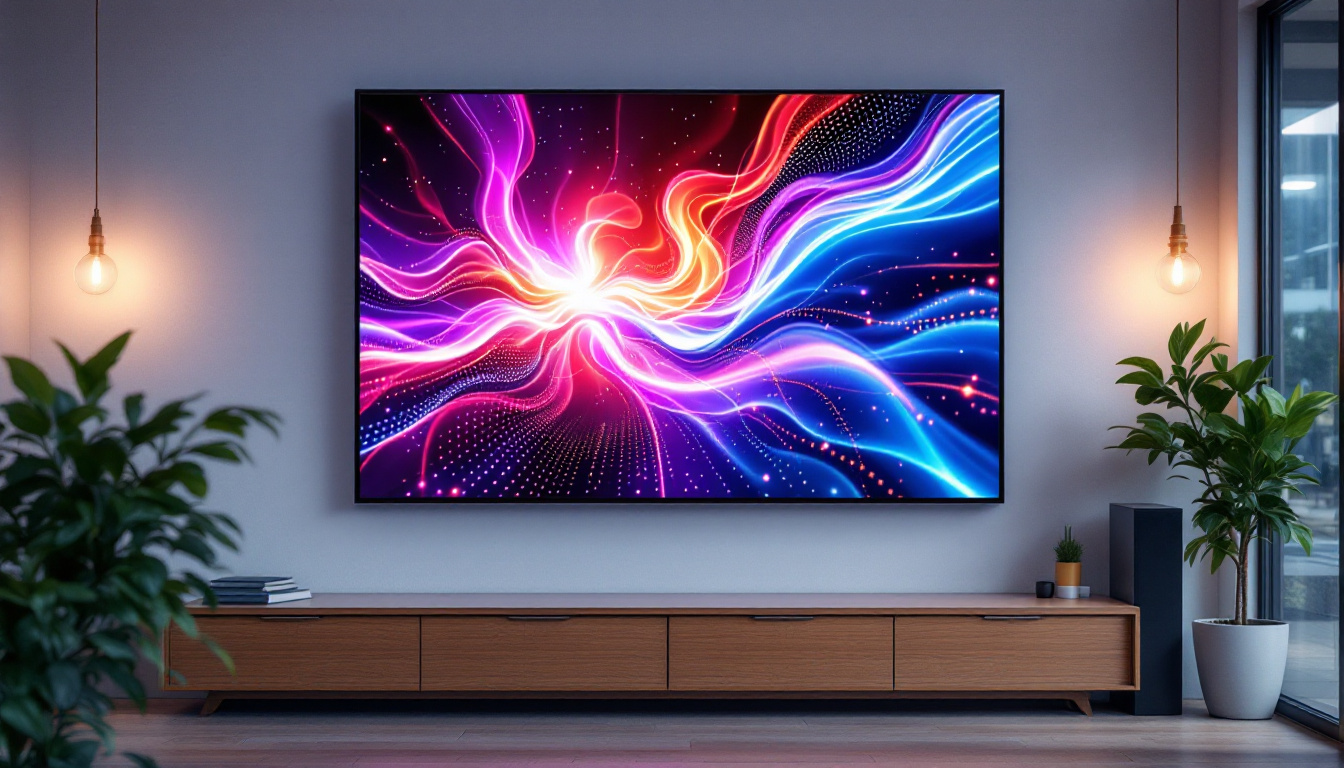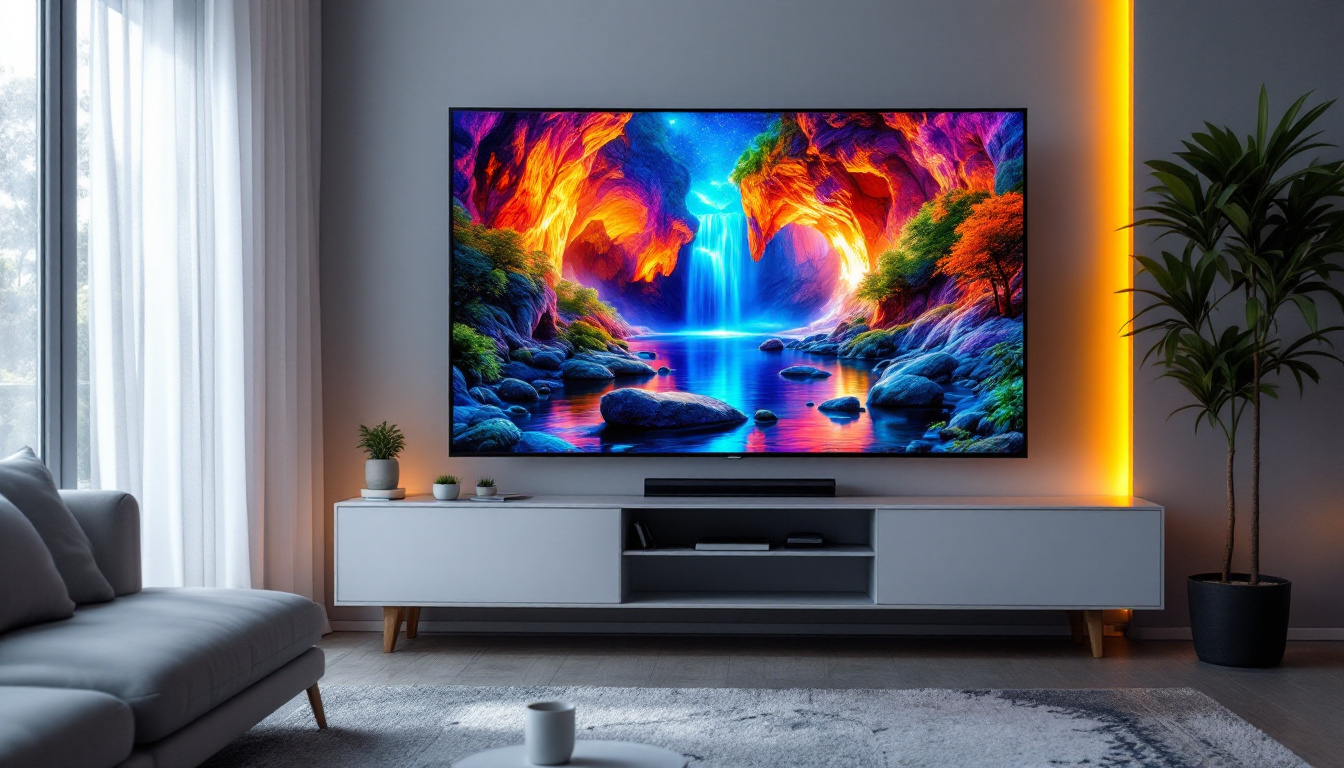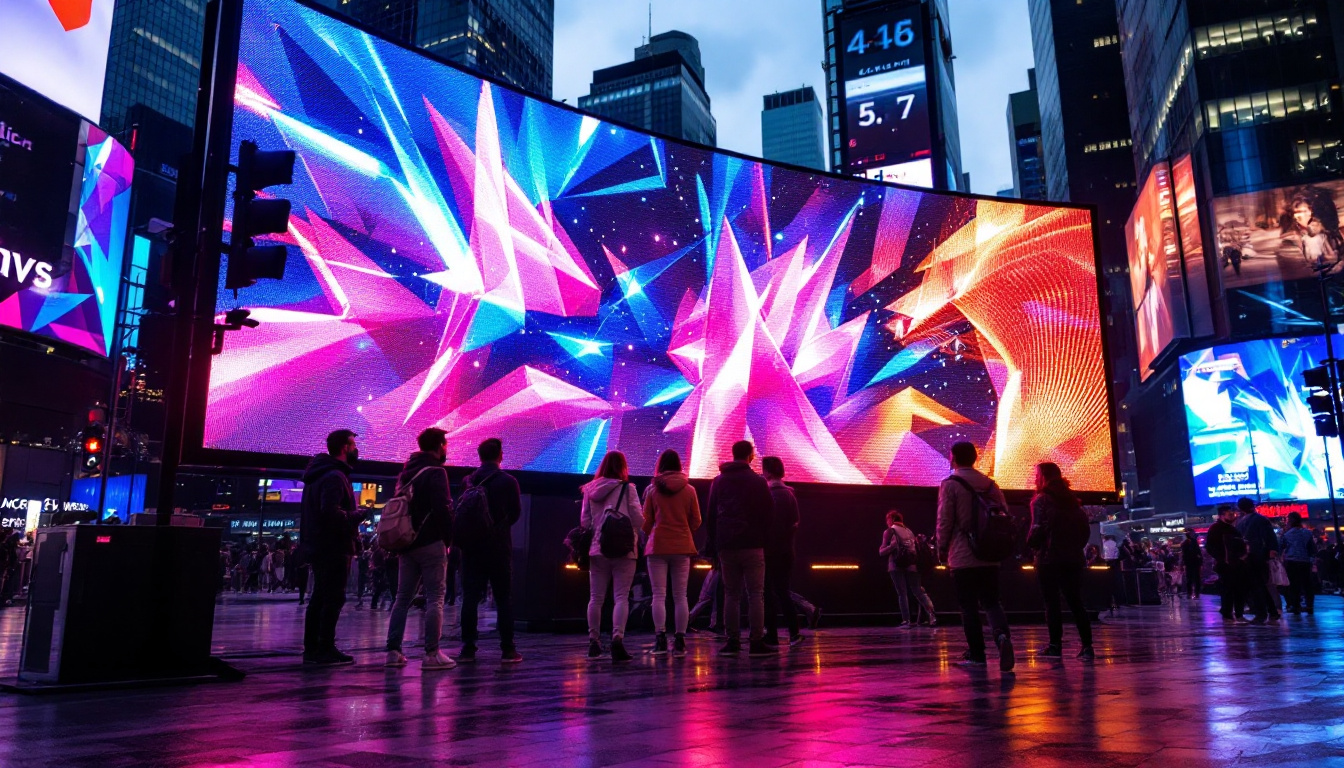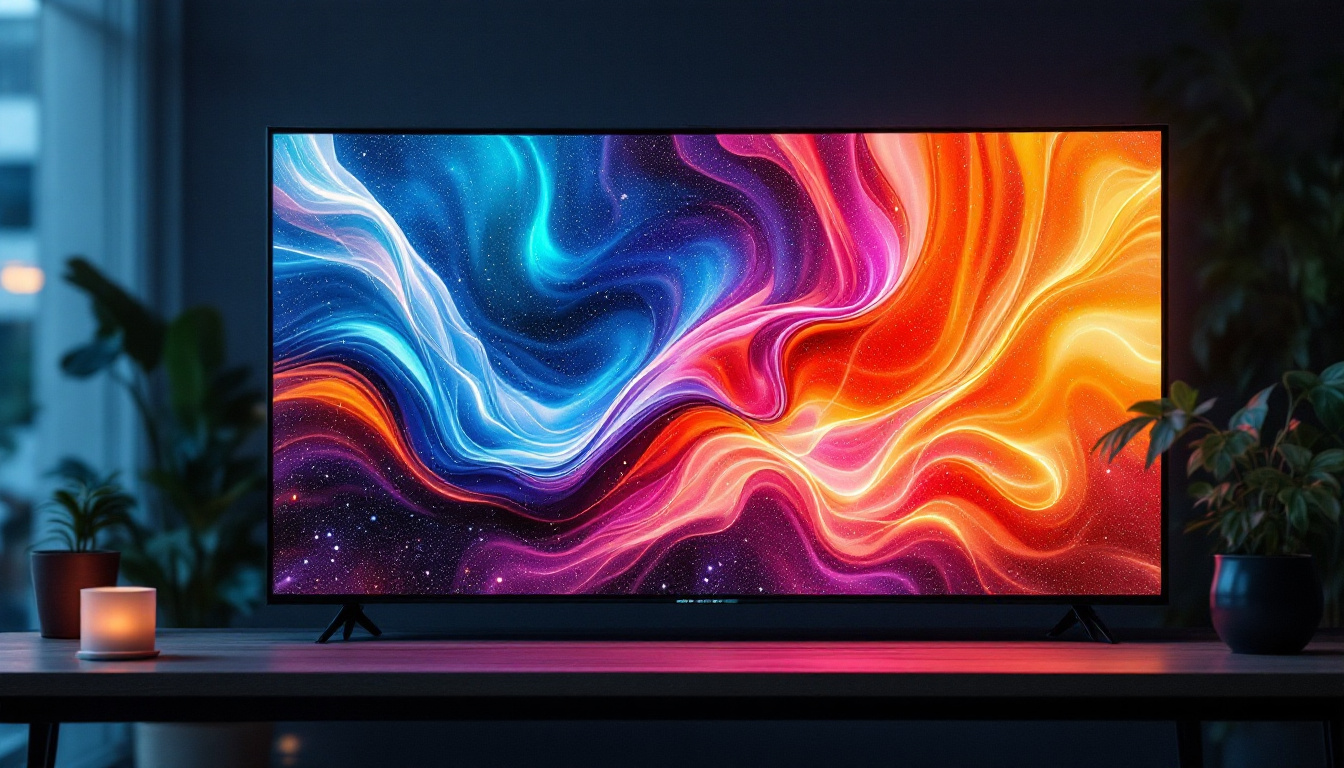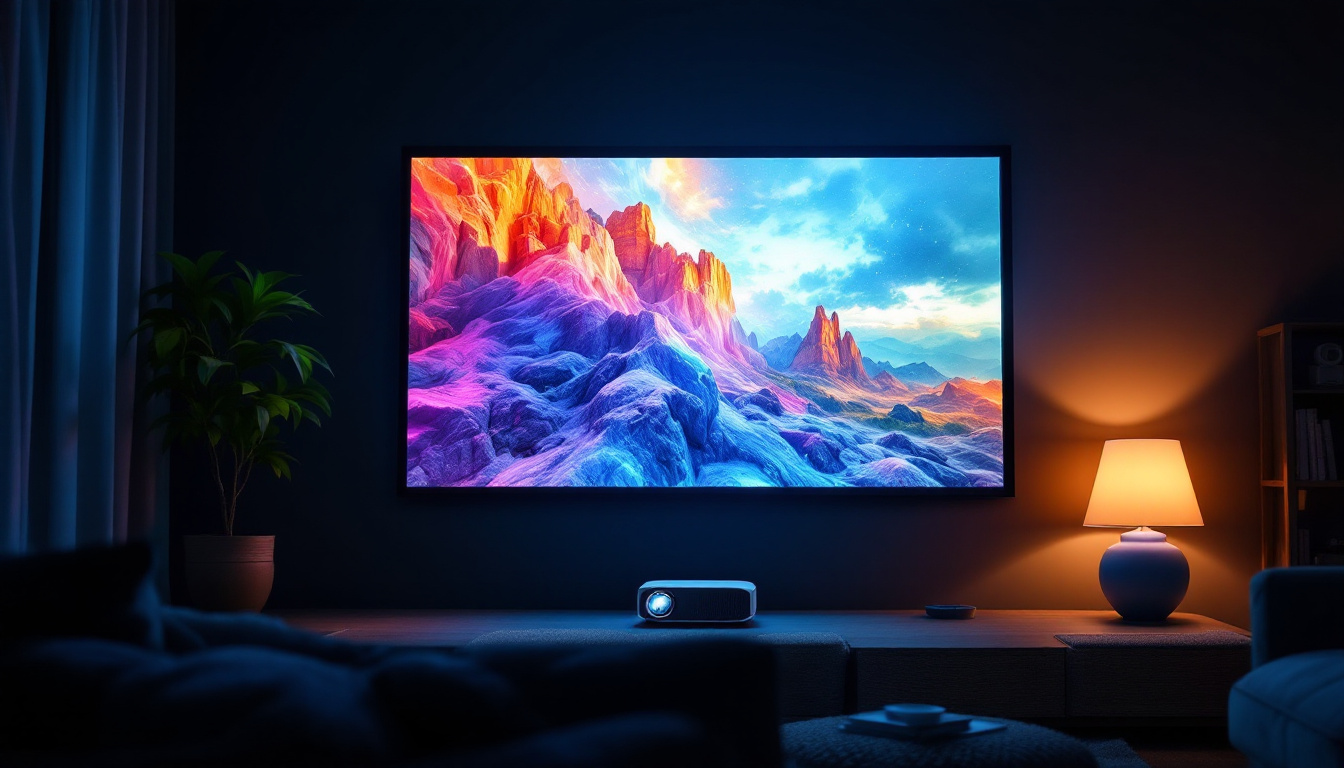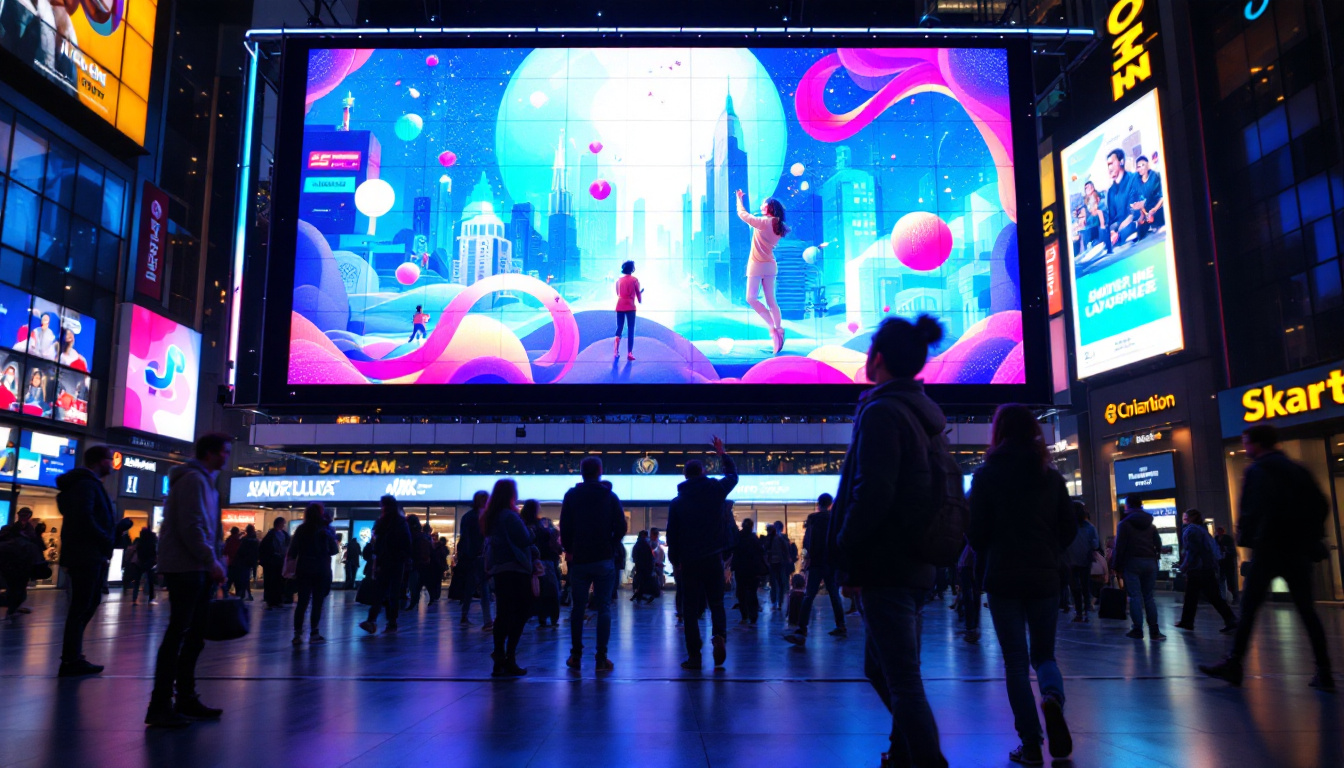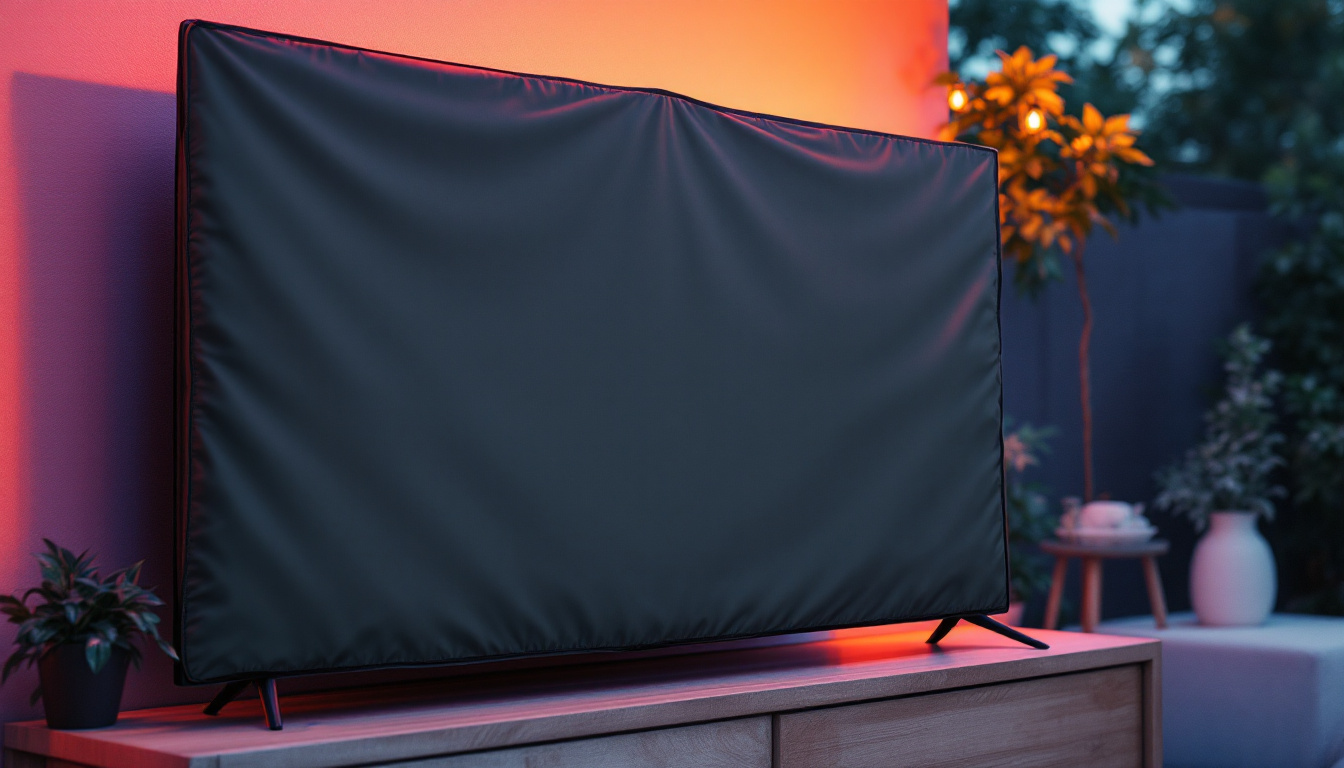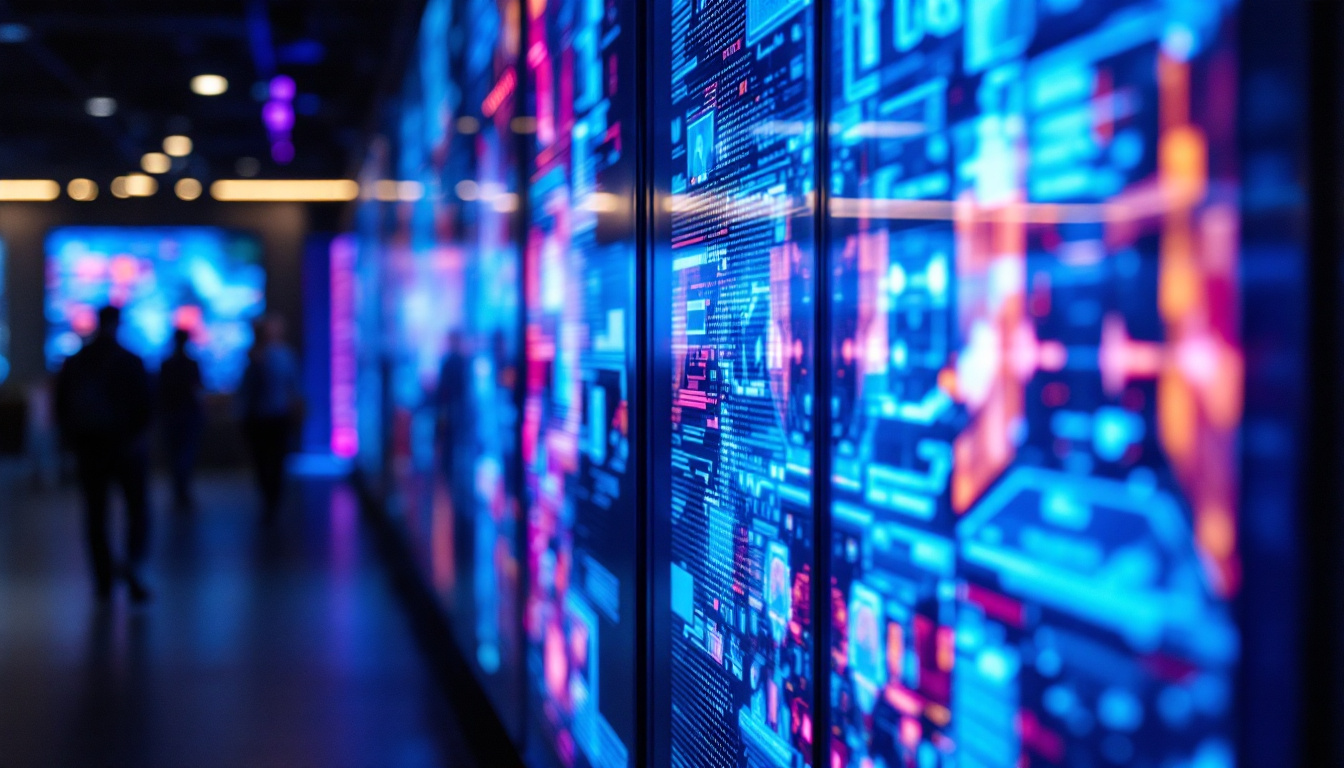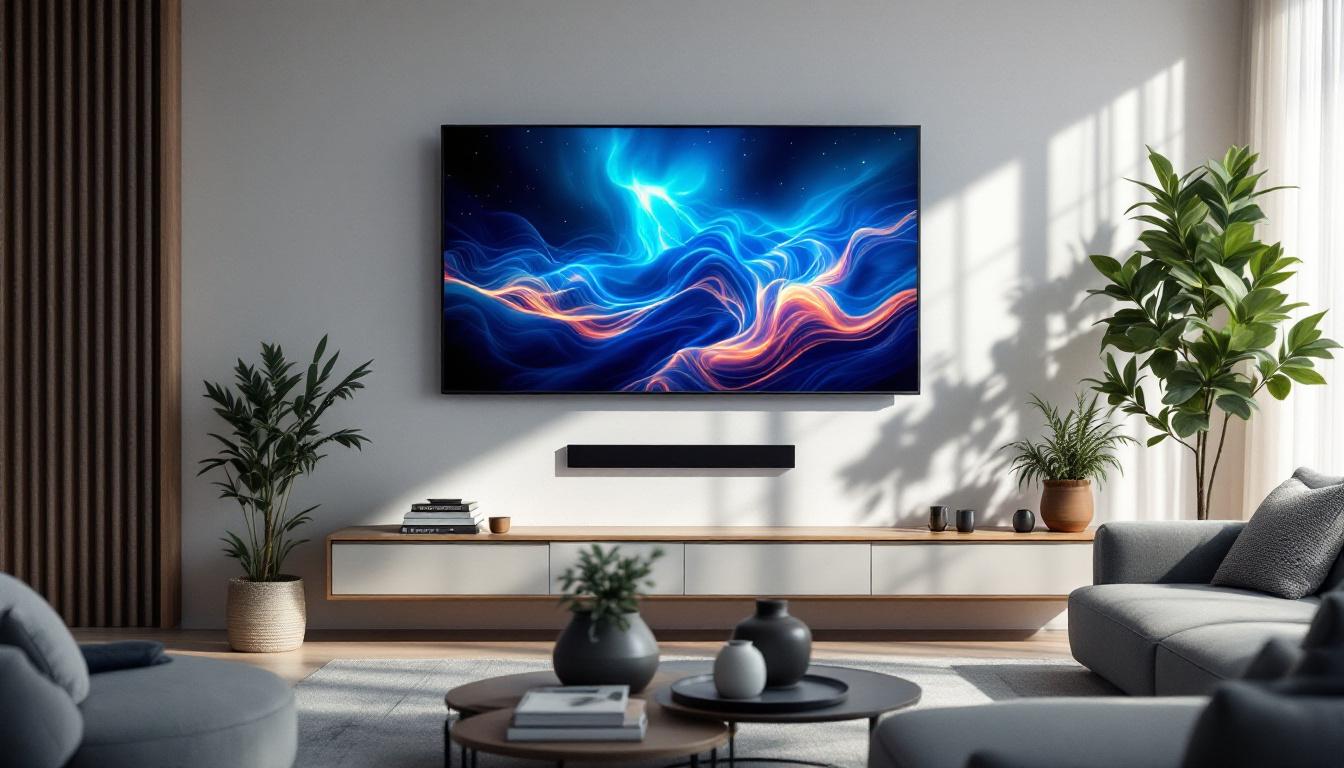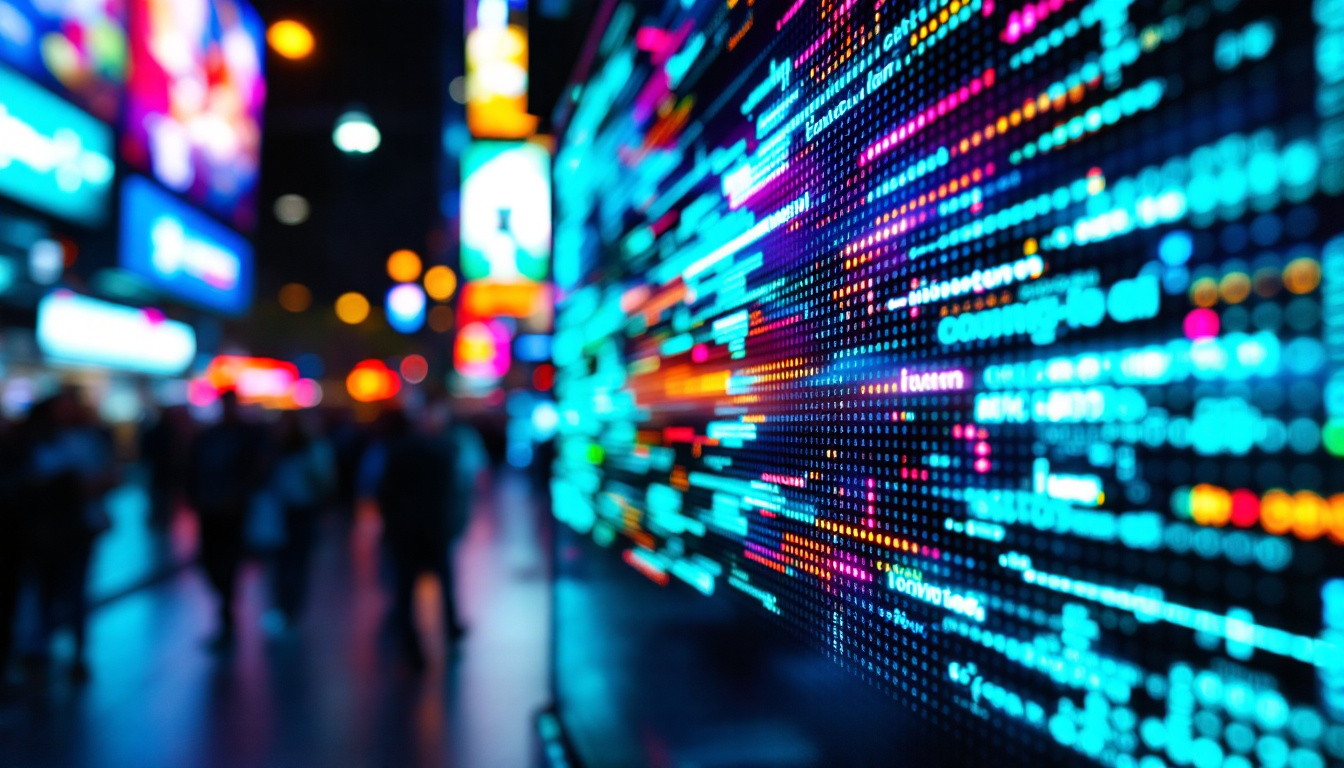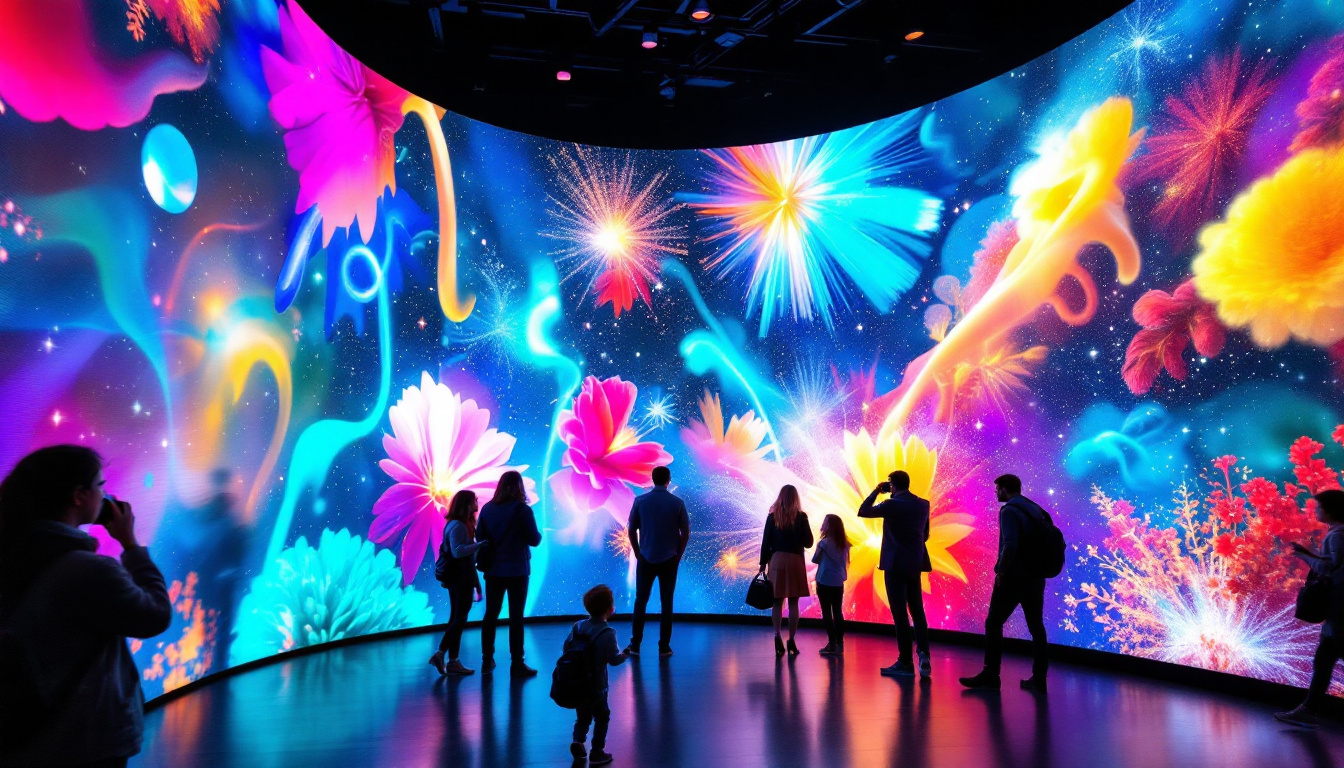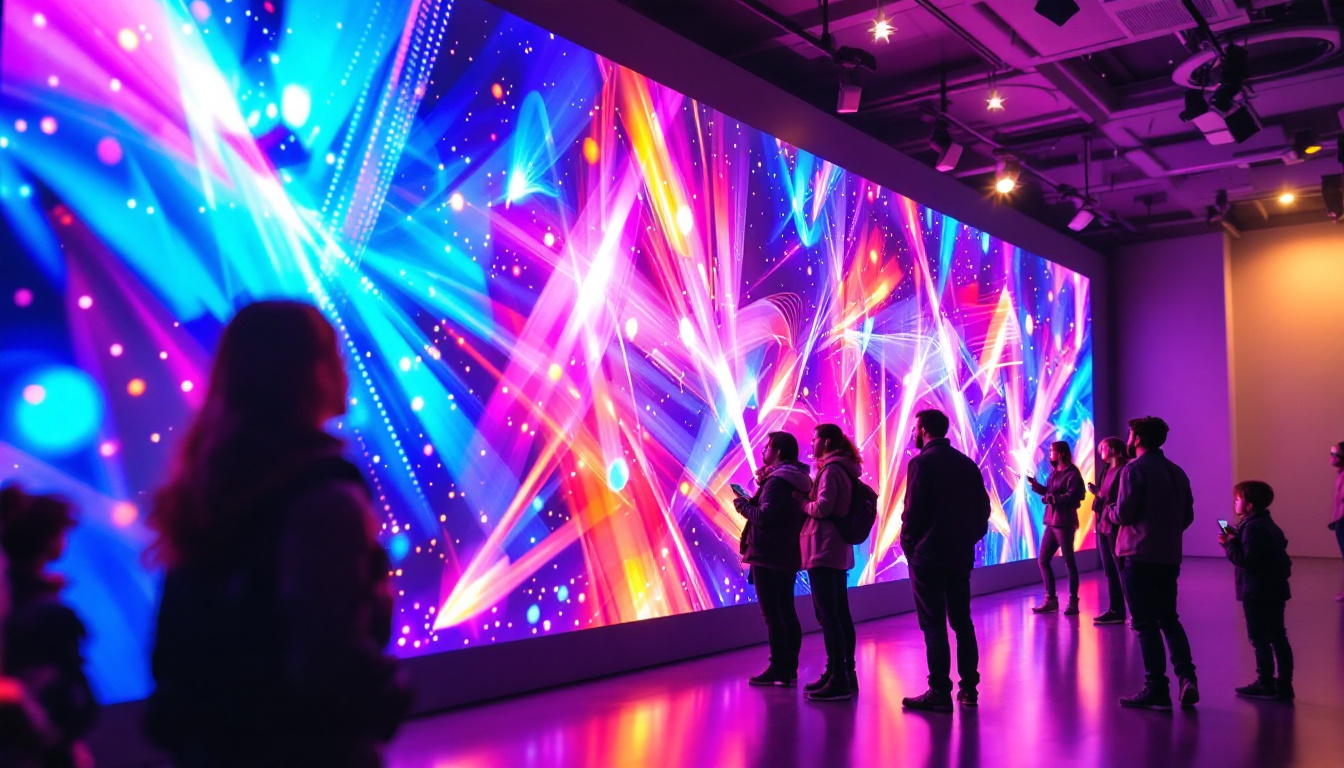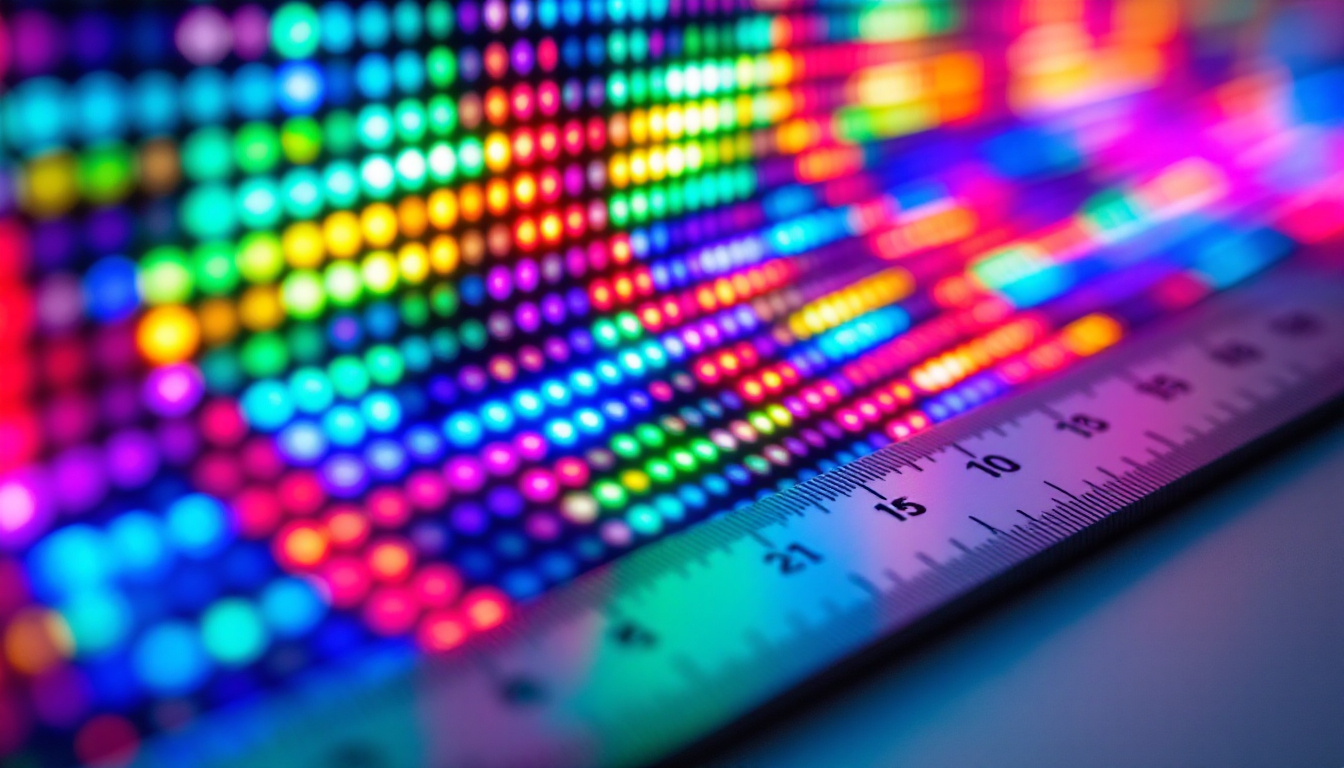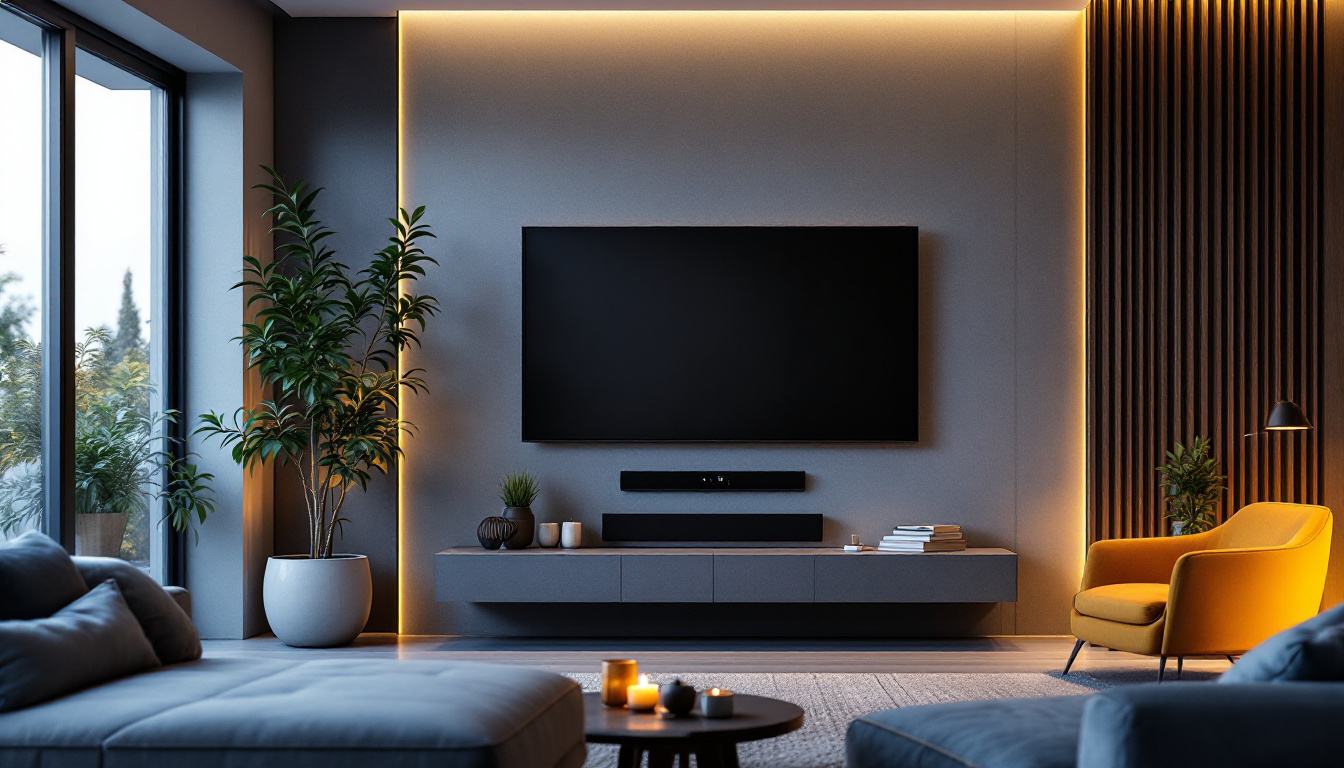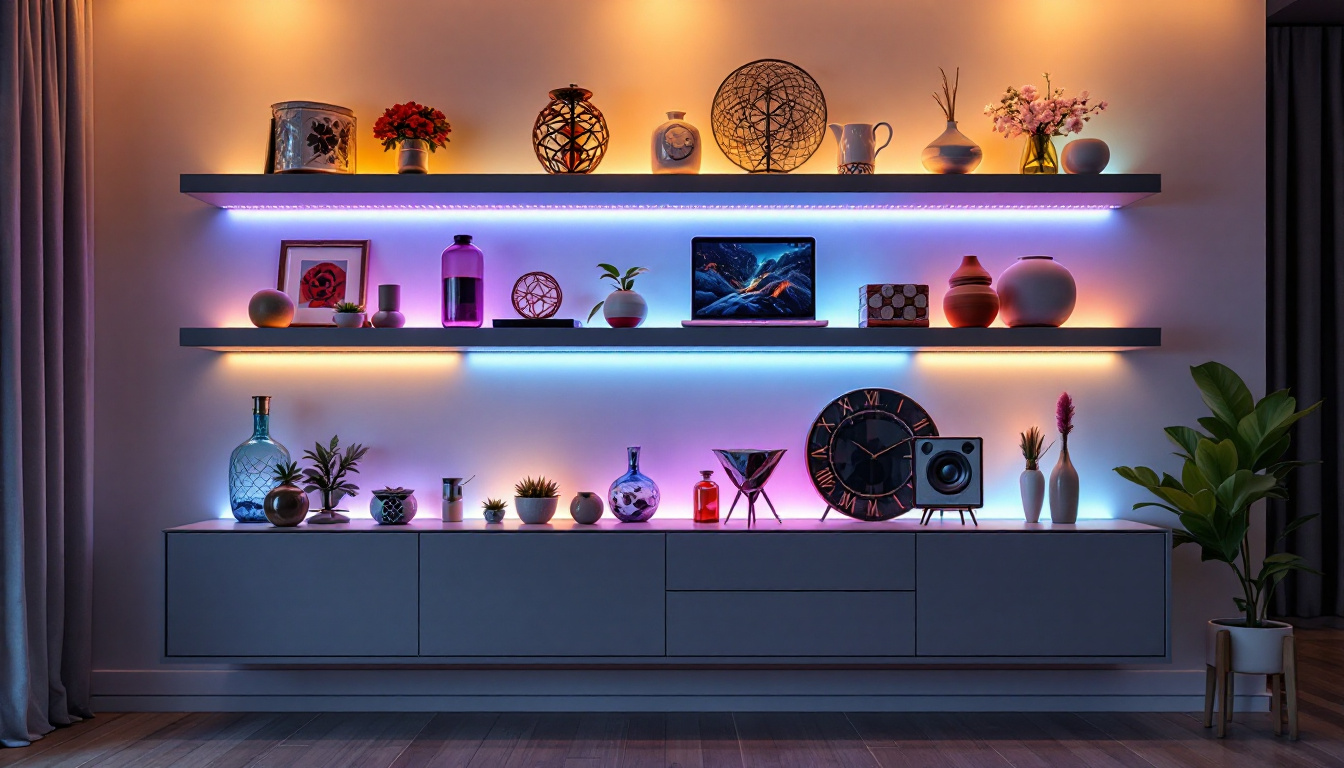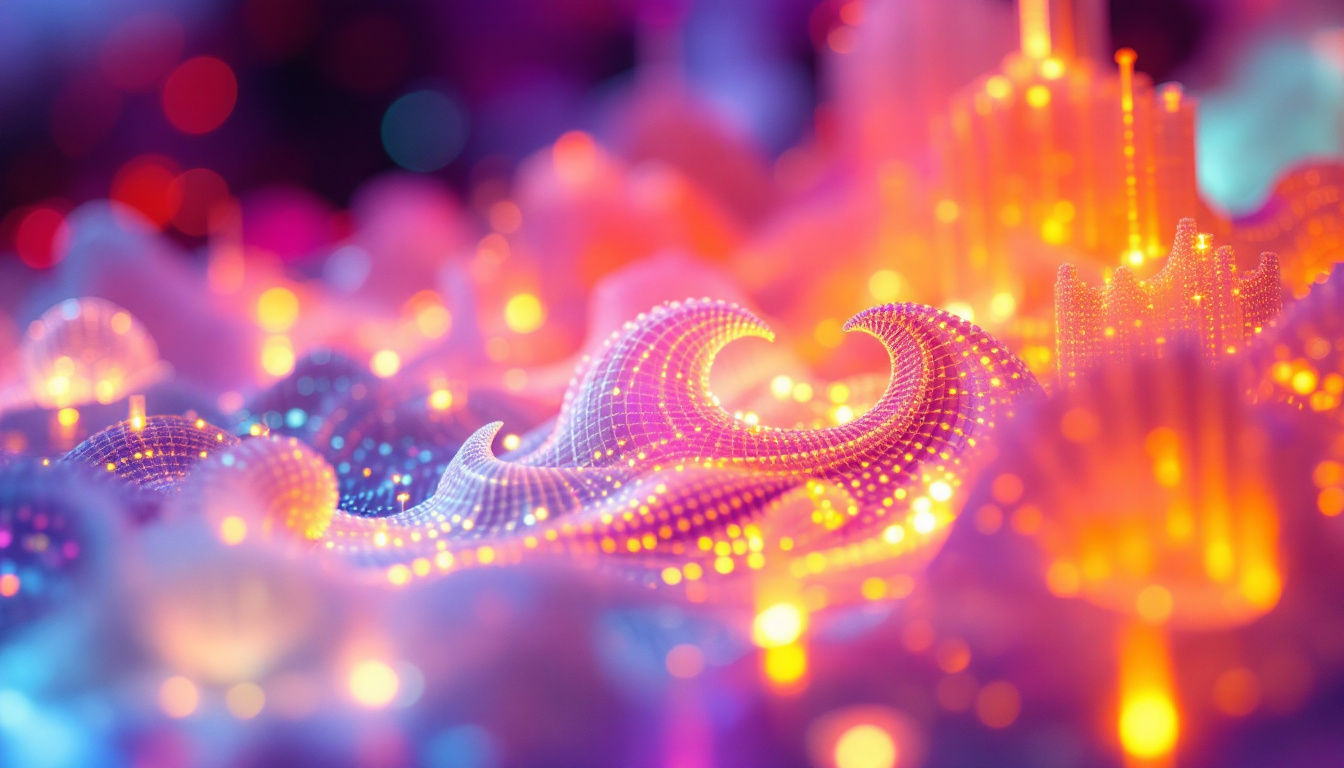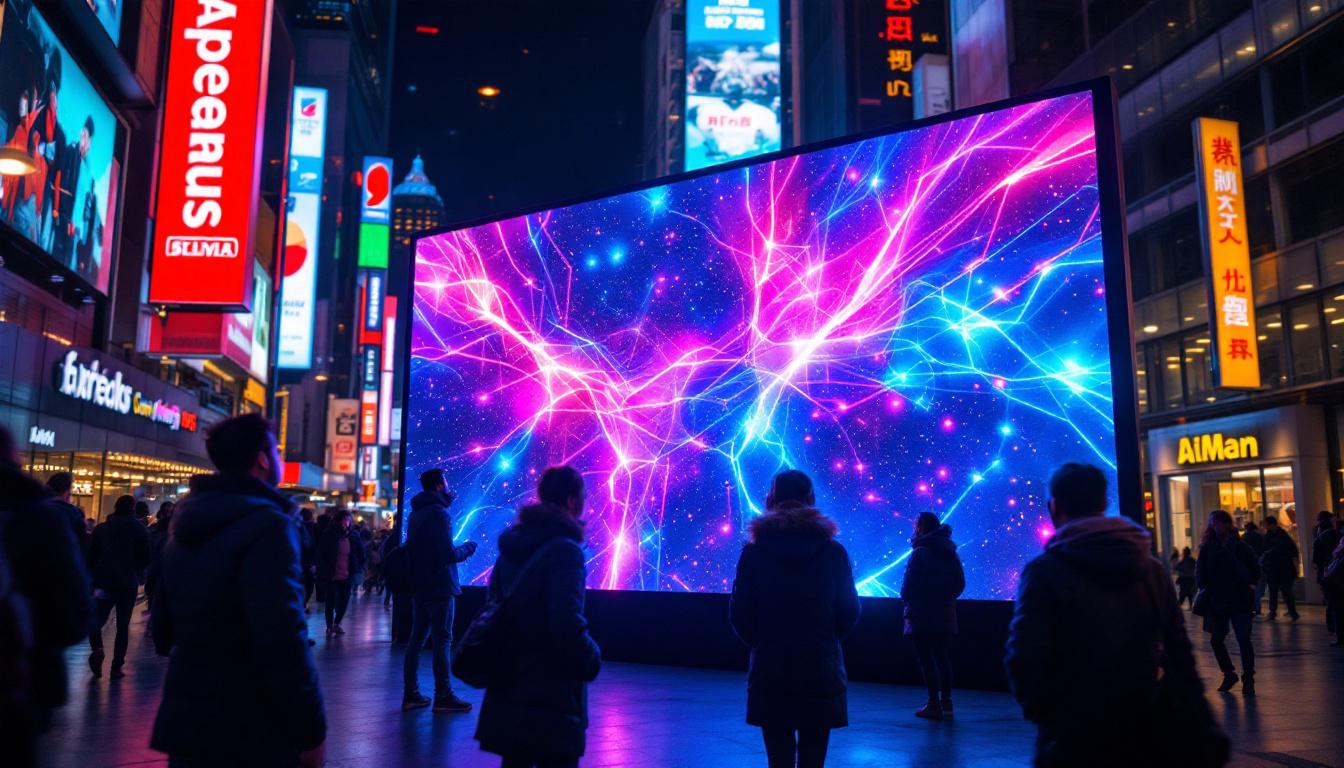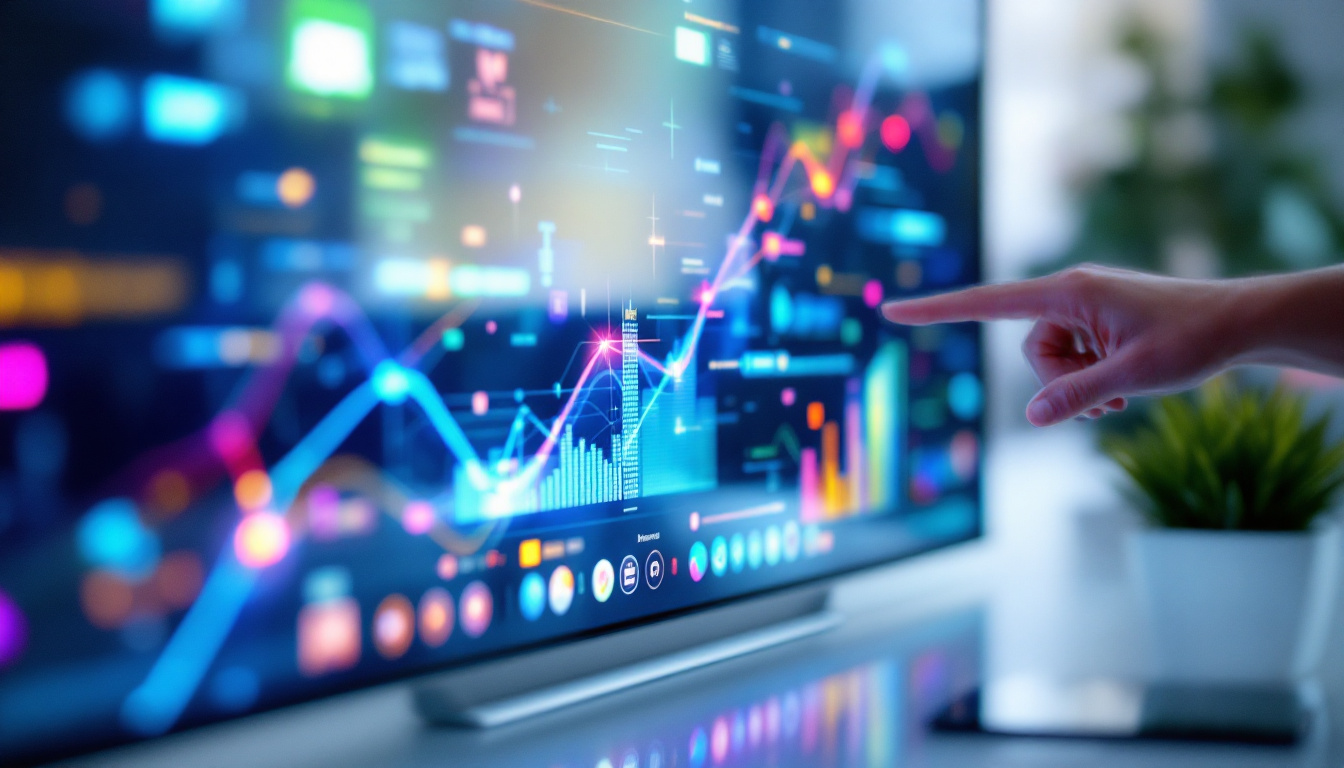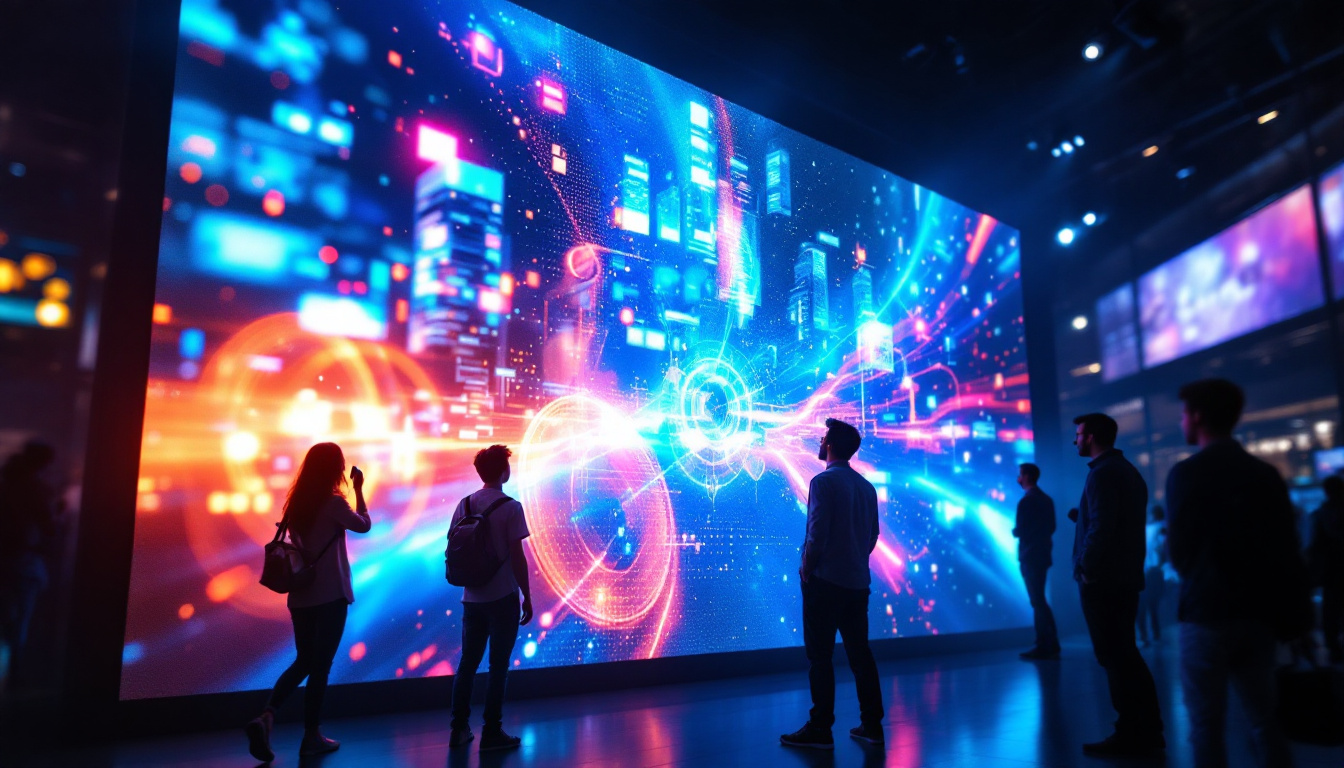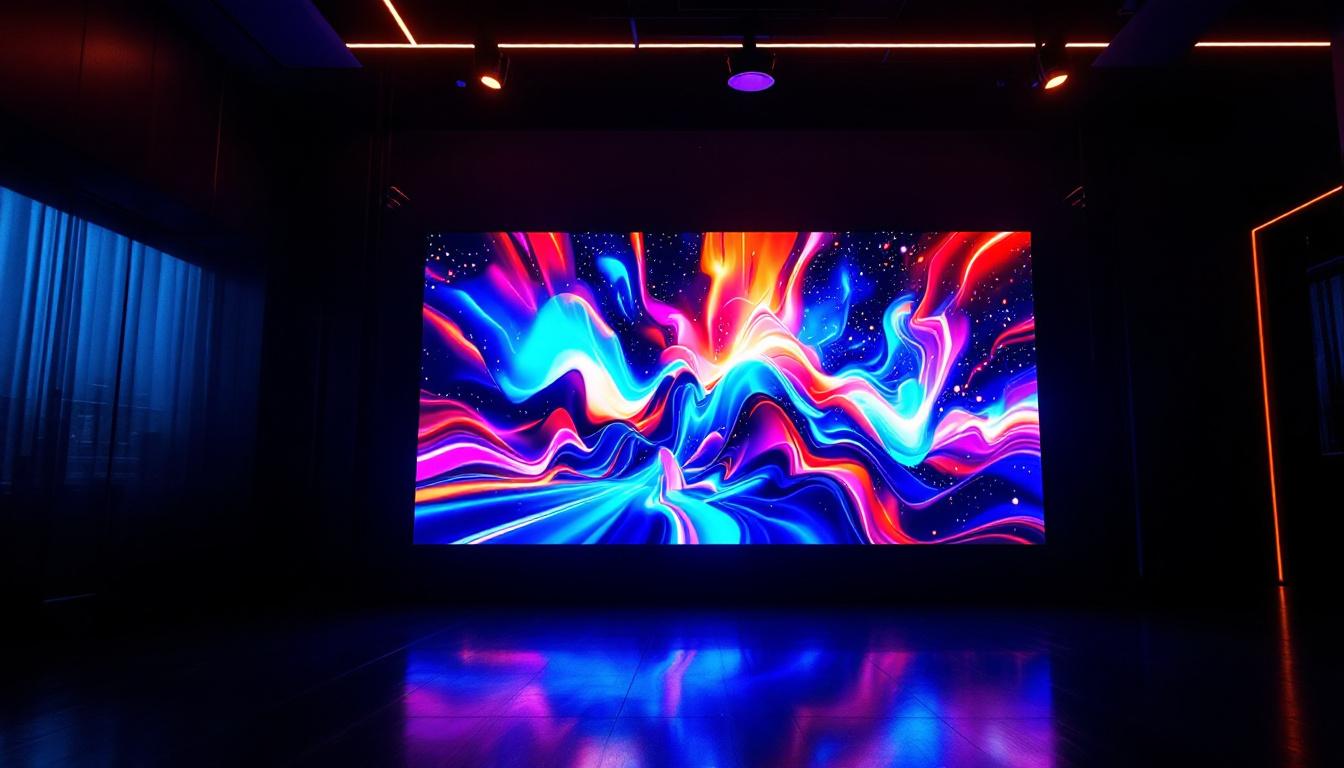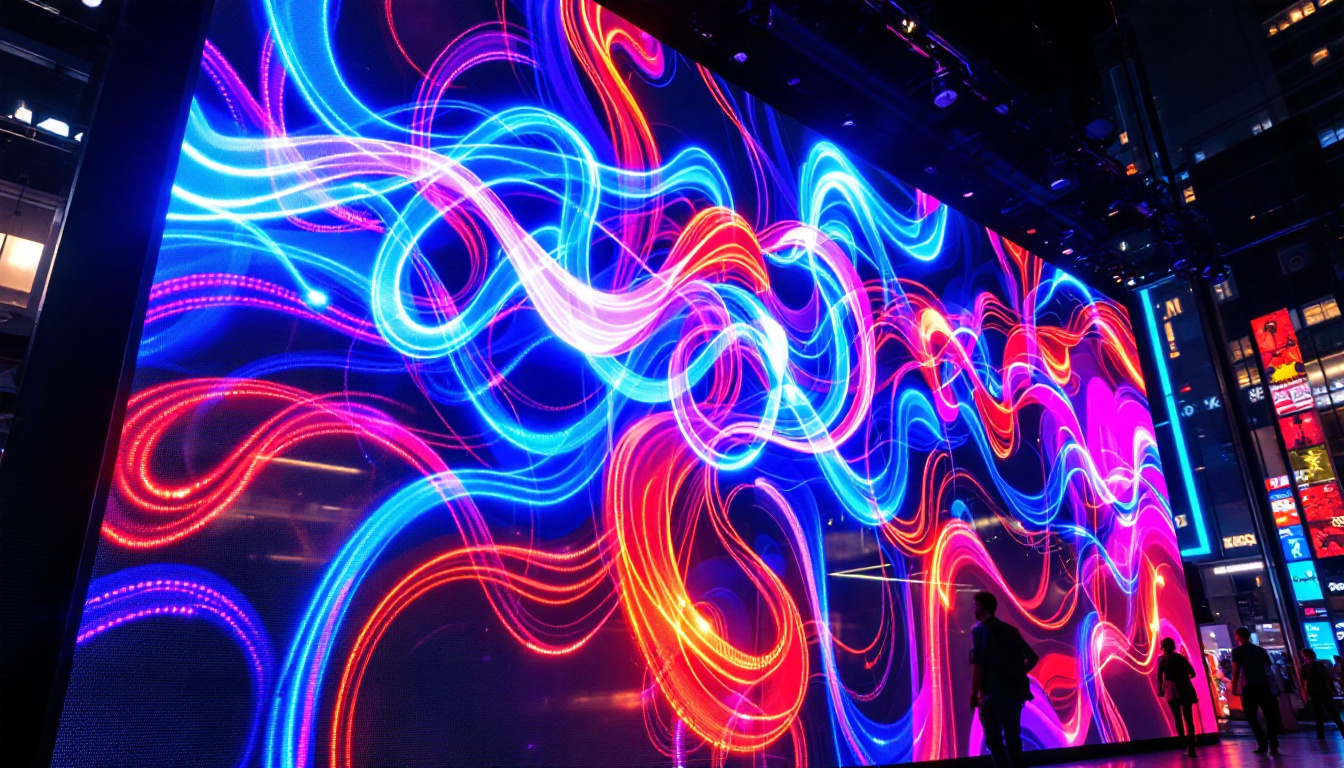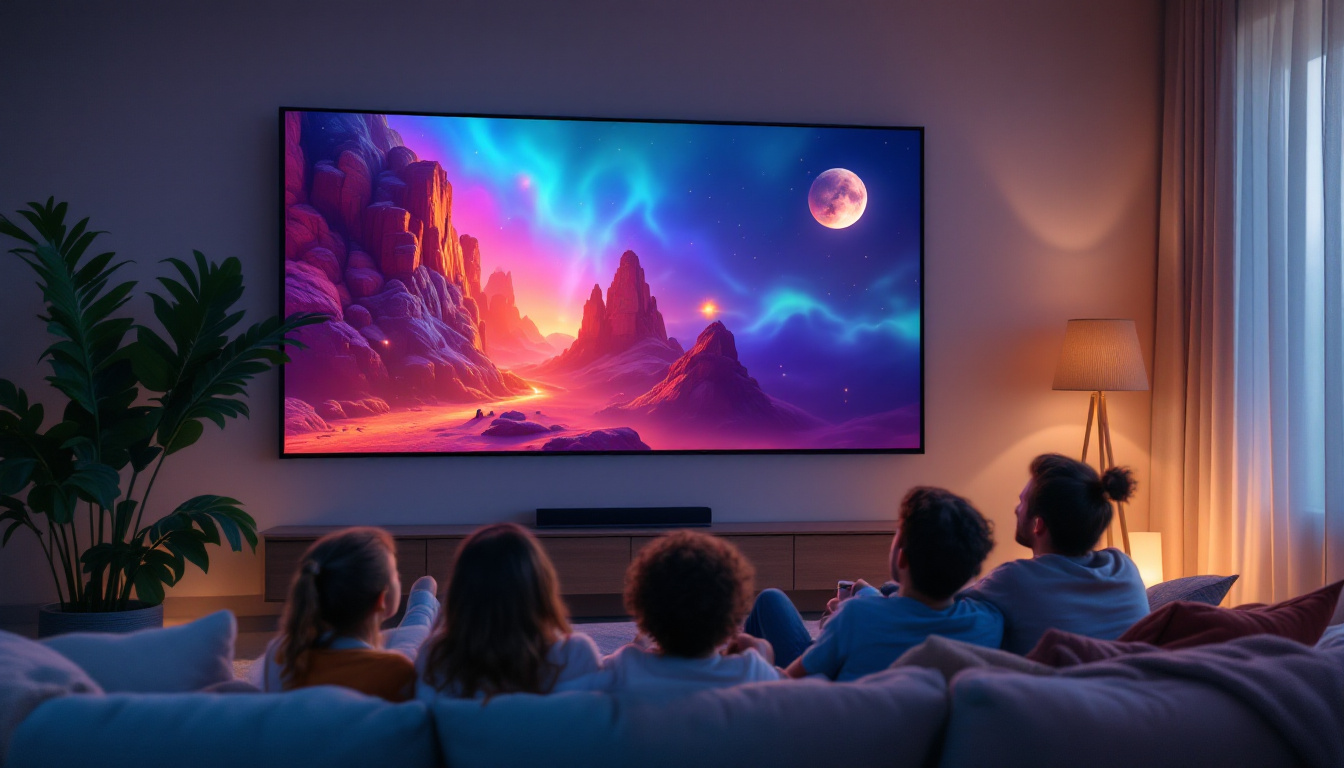In today’s digital age, visual communication has become increasingly important for businesses, educational institutions, and public spaces. One of the most effective ways to convey information and engage audiences is through wall display monitors, particularly those that utilize LED technology. This article delves into the intricacies of LED displays, exploring their features, advantages, and applications.
Understanding LED Technology
What is an LED Display?
LED, or Light Emitting Diode, displays are screens that use semiconductor technology to produce light. Unlike traditional LCD screens that rely on backlighting, LED displays generate their own light, resulting in brighter and more vibrant images. This technology has revolutionized the way visual content is displayed, making it a popular choice for wall monitors. The energy efficiency of LED displays also contributes to their growing popularity, as they consume significantly less power than their predecessors, leading to lower electricity bills and a reduced carbon footprint.
LED displays can be categorized into various types, including direct view LED, LED-backlit LCD, and organic LED (OLED). Each type has its unique characteristics and applications, but all share the common advantage of delivering high-quality visuals. For instance, OLED displays are particularly known for their deep blacks and wide viewing angles, making them ideal for high-end televisions and mobile devices. Meanwhile, direct view LED displays are often used in large-scale applications such as outdoor advertising and sports arenas, where brightness and visibility are paramount.
How LED Displays Work
At the core of an LED display are tiny diodes that emit light when an electric current passes through them. These diodes are arranged in a grid pattern, allowing for the creation of images by varying the intensity of light emitted from each diode. The combination of red, green, and blue diodes produces a full spectrum of colors, enabling the display of detailed and dynamic visuals. This additive color mixing process is fundamental to how we perceive color on screens, as the human eye blends these primary colors to see a wide array of hues.
Modern LED displays also incorporate advanced technologies, such as pixel pitch and resolution, which determine the clarity and sharpness of the images. Pixel pitch refers to the distance between the centers of two adjacent pixels, with smaller pitches resulting in higher resolution and better image quality. Additionally, innovations like HDR (High Dynamic Range) technology enhance the contrast and color accuracy of LED displays, allowing for a more lifelike viewing experience. As a result, LED displays are increasingly being adopted in various sectors, including entertainment, education, and corporate environments, where high-quality visual communication is essential.
Advantages of LED Displays
High Brightness and Visibility
One of the standout features of LED displays is their exceptional brightness. They can produce vivid colors and sharp images even in well-lit environments, making them ideal for outdoor advertising and high-traffic areas. This high visibility ensures that the content displayed is easily seen by a large audience, enhancing communication effectiveness. Moreover, the ability to adjust brightness levels dynamically allows for optimal viewing experiences at any time of day, ensuring that the visuals remain striking and engaging regardless of ambient light conditions. This adaptability is particularly beneficial for events that transition from day to night, as it maintains the integrity of the display without compromising on quality.
Energy Efficiency
LED technology is known for its energy efficiency, consuming significantly less power compared to traditional display technologies. This not only reduces operational costs but also contributes to environmental sustainability. As businesses and organizations strive to minimize their carbon footprint, LED displays present an attractive solution. Furthermore, the lower energy consumption translates into less heat generation, which can lead to reduced cooling costs in environments where displays are used extensively. This aspect of energy efficiency not only benefits the bottom line but also aligns with the growing trend of eco-conscious consumerism, where businesses are increasingly evaluated based on their environmental impact.
Durability and Longevity
LED displays are built to last. They are resistant to shock and vibration, making them suitable for various environments, including outdoor settings. Additionally, LED technology has a longer lifespan compared to other display types, often exceeding 100,000 hours of use. This durability translates into lower maintenance costs and a better return on investment. The robust construction of LED displays also means they can withstand extreme weather conditions, from heavy rain to intense sunlight, ensuring that they remain operational in diverse climates. This reliability is crucial for businesses that rely on continuous advertising and communication, as it minimizes downtime and maximizes visibility. Furthermore, advancements in LED technology continue to enhance their resilience, making them even more suitable for demanding applications, such as sports arenas and concert venues, where performance and reliability are paramount.
Applications of LED Displays
Advertising and Marketing
LED displays have become a staple in advertising and marketing strategies. Their ability to showcase dynamic content, such as videos and animations, captures the attention of potential customers. Retailers, for instance, utilize LED screens to promote products, announce sales, and create immersive shopping experiences.
Digital billboards, often seen along highways and in urban centers, leverage LED technology to deliver eye-catching advertisements that can be updated in real-time. This flexibility allows advertisers to tailor their messages based on audience demographics and current trends. Furthermore, LED displays can incorporate interactive elements, enabling passersby to engage with the content directly through touch or motion sensors. This interactivity not only enhances customer engagement but also provides valuable data on consumer behavior and preferences, allowing brands to refine their marketing strategies effectively.
Corporate Communication
In corporate environments, LED displays serve as powerful tools for communication. They are commonly used in conference rooms, lobbies, and break areas to share information with employees and visitors. From displaying company news to showcasing achievements, these monitors enhance internal communication and foster a sense of community.
Moreover, LED displays can be integrated into video conferencing systems, providing a clear and engaging platform for remote collaboration. This is particularly valuable in today’s hybrid work environments, where effective communication is essential for productivity. Additionally, companies can utilize LED screens for real-time data visualization, displaying key performance indicators (KPIs) and analytics that keep teams informed and motivated. By creating a visually stimulating workplace, organizations can boost employee morale and encourage a culture of transparency and collaboration.
Education and Training
Educational institutions have embraced LED displays for their versatility and effectiveness in teaching. Classrooms equipped with LED monitors facilitate interactive learning experiences, allowing educators to present multimedia content that captures students’ attention. This technology supports various teaching methods, from traditional lectures to hands-on workshops.
Additionally, LED displays are used in auditoriums and lecture halls to enhance presentations and events. Their high resolution and brightness ensure that all attendees can see the content clearly, regardless of their seating position. Beyond standard classroom use, LED technology is also making waves in distance learning environments. With the rise of online education, LED displays can serve as virtual whiteboards or collaborative platforms where students can engage in real-time discussions and group projects, bridging the gap between traditional and digital learning. This adaptability not only enriches the educational experience but also prepares students for a tech-driven world, equipping them with essential skills for their future careers.
Choosing the Right LED Display
Factors to Consider
Selecting the appropriate LED display for a specific application involves several considerations. First and foremost, the intended use of the display should guide the decision-making process. For instance, outdoor displays require higher brightness levels and weather-resistant features, while indoor displays can prioritize resolution and color accuracy.
Other factors to consider include the size of the display, pixel pitch, and connectivity options. Larger displays with smaller pixel pitches provide better image quality but may come with higher costs. It is essential to balance budget constraints with the desired features to ensure a satisfactory investment.
Installation and Maintenance
Proper installation and maintenance are crucial for maximizing the performance and lifespan of LED displays. Professional installation ensures that the display is securely mounted and configured for optimal viewing angles. Additionally, routine maintenance, such as cleaning and software updates, helps prevent issues and keeps the display functioning at its best.
Many manufacturers offer support and warranties, which can provide peace of mind for businesses investing in LED technology. Understanding the terms of these warranties and the availability of customer support is essential for long-term satisfaction.
Future Trends in LED Display Technology
Advancements in Resolution
The demand for higher resolution displays continues to grow, driven by the need for more detailed and immersive visuals. Innovations in pixel technology, such as microLED and miniLED, are paving the way for displays that offer even greater clarity and color accuracy. These advancements are particularly relevant for applications in entertainment, gaming, and virtual reality.
As resolution improves, the applications for LED displays will expand, allowing for new creative possibilities in various industries. This trend is expected to redefine how content is created and consumed, making LED displays an integral part of future visual communication strategies.
Integration with Smart Technology
The integration of LED displays with smart technology is another trend shaping the future of this industry. Smart displays equipped with IoT (Internet of Things) capabilities can collect and analyze data to optimize content delivery and user engagement. For instance, smart advertising displays can adjust their content based on real-time audience demographics, enhancing the effectiveness of marketing campaigns.
Furthermore, the rise of artificial intelligence (AI) in content creation and management will revolutionize how LED displays are utilized. AI-driven systems can analyze viewer behavior and preferences, allowing for personalized content that resonates with specific audiences.
Conclusion
LED displays have transformed the landscape of visual communication, offering unparalleled brightness, energy efficiency, and durability. Their versatility makes them suitable for a wide range of applications, from advertising and corporate communication to education and training. As technology continues to advance, the potential for LED displays will only grow, paving the way for innovative solutions that enhance engagement and connectivity.
When considering an investment in LED display technology, it is essential to evaluate the specific needs of the application, ensuring that the chosen display aligns with organizational goals. With careful planning and consideration, LED displays can serve as powerful tools for communication, marketing, and education in the digital age.
Discover LumenMatrix’s Innovative LED Display Solutions
Ready to elevate your visual communication strategy with the latest in LED technology? Look no further than LumenMatrix, a pioneer in creating vibrant and energy-efficient LED display modules. Whether you need an Indoor LED Wall Display for your corporate office, an Outdoor LED Wall Display for impactful advertising, or any of our other tailored solutions like Vehicle, Sports, or Floor LED Displays, LumenMatrix has you covered. Embrace the future of digital signage with our All-in-One and Transparent LED Displays, designed to captivate your audience and amplify your message. Check out LumenMatrix LED Display Solutions today and transform your space into a dynamic visual experience.

